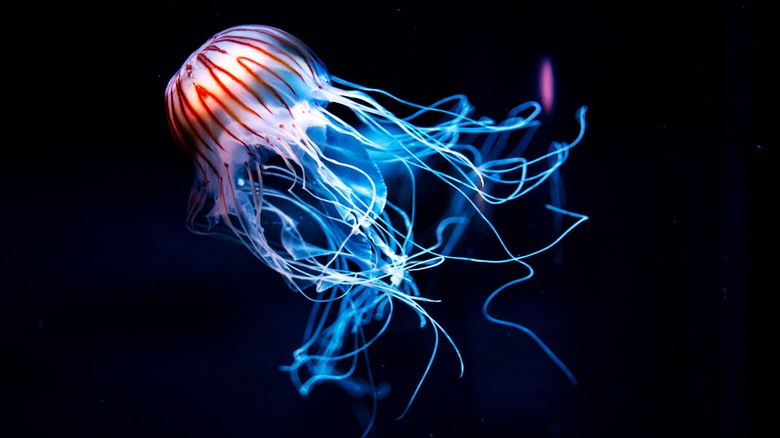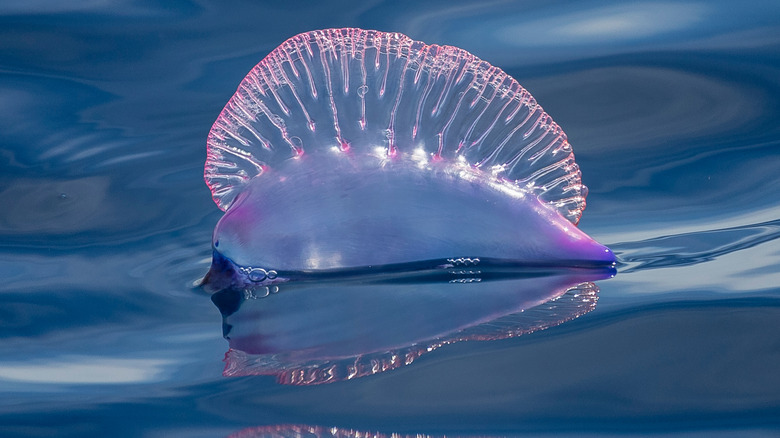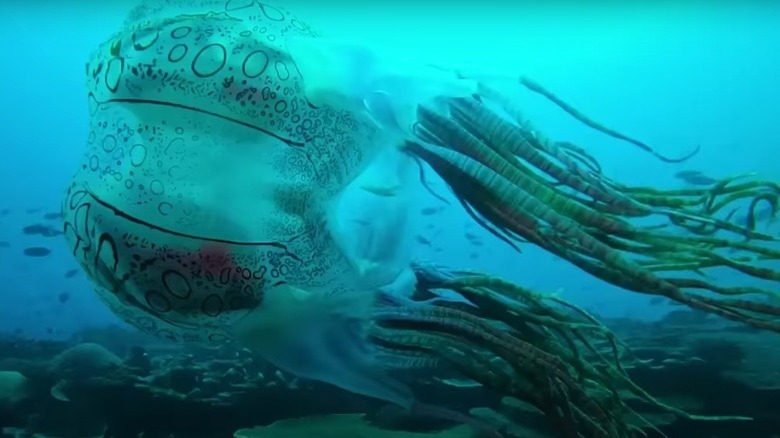Why This New Species Of Jellyfish Could Be Unlike Any Others We've Seen
This planet of ours is home to a spectacular array of remarkable animals. The yellow-bellied sea snake, for instance, can swim at a blistering one meter per second, making it the planet's fastest swimming snake (per Guinness World Records). Blue whales, meanwhile, are the biggest animals of all time, according to the BBC.
We humans, it can be modestly said, are rather impressive too. We invented the Internet, we developed airplanes, and, most incredibly of all, one of us managed to fit 105 lit candles in their mouth at once (Garrett James' world record still stands, per Guinness World Records). Now that's a feat.
The animal kingdom continues to remind us just how incredible it can be, though, and new species continue to be discovered. Jellyfish have always been fascinating beings. According to National Geographic, they have lived for 500 million years, and their bodies are almost entirely water (just 5% is not). How they continue to survive without brains is a fascinating mystery, but they certainly do; they're found all around the world. One particularly glorious jellyfish sighting seems to have sparked real interest among enthusiasts and researchers.
A chance discovery of an incredible jellyfish
Some jellyfish have incredibly powerful stingers. The Portuguese man o' war (above) is a particularly formidable example, boasting (according to the National Ocean Service) a mass of stinging tentacles that can be up to 100 feet long. While these don't tend to be deadly to us, they can certainly ruin several days for those on the receiving end. Other species are tiny and largely harmless. The planet's smallest jellyfish, Guinness World Records reports, are the Irukandji box jellies of Australia, which can be a mere five centimeters in size. They boast deadly venom, however, and are not to be underestimated.
Jellies are admired around the world for their ethereal qualities and unique biology. One curious specimen found in 2022, however, could be the most intriguing yet. It seems to move and look like no other.
Dorian Borcherds, per The Guardian, was scuba diving in Papua New Guinea when he encountered a jellyfish. The creature was so unusual-looking, seeming to sport an elaborate pattern on its body, that he captured footage of it (via Mashable on YouTube). Borcherds, who runs Scuba Ventures, is very experienced with the region, having been diving there for over 20 years. When a small number of these very special specimens passed, though, he'd never seen anything quite like it.
Making waves among scientists
According to The Guardian, Borcherds was also stunned by the way they swam, seemingly with a purpose and intent that belied their brain-free lack of decision-making. Borcherd's wife saw the footage and shared it to the app Jellyfish, which was created in part by Australian Marine Stinger Advisory Services' own Dr. Lisa-ann Gerschwin. The app helps to identify species of these extraordinary creatures, and according to Gerschwin, this one could be brand new to science.
Gershwin herself gushed about the discovery in an interview with Australia's ABC News (via YouTube). "It came to my email, and I took one look at this thing and I went oh my God," the scientist said. In Gerschwin's expert opinion, this enigmatic creature is "... huge [and] it's got to be highly venomous." It was estimated that the jellyfish in question was about the size of a soccer ball. The expert went on to draw parallels between the new jellyfish (pictured above) and Chirodectes maculatus, a mysterious species that had previously been seen only once on the Great Barrier Reef, per The Guardian.
Though there was some debate as to whether they were the same creature, Gershwin explained that she had closely scrutinized the video and was confident that the critter was a new discovery. It's intriguing to consider what other secrets the jellyfish of the world might hold, and what their implications may be.


